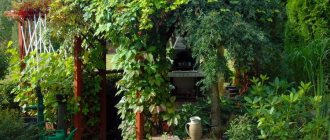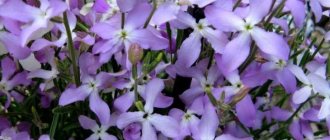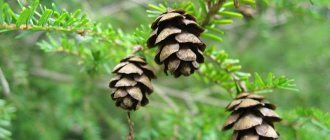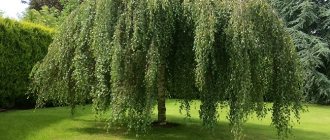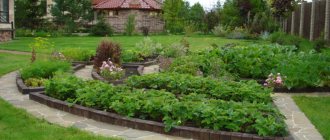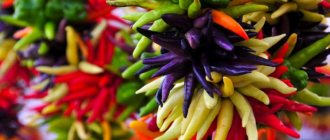A personal plot is a territory that every owner can design according to his tastes and preferences. It doesn’t matter whether you have a large area or just a few acres, any area can be turned into a cozy corner, a wonderful place to relax among beautiful plants, where vines for the garden occupy a special place. The earth is always ready to share its pure energy and beauty with man, energizing, cleansing and refreshing. Lianas will help create cozy corners, secluded places in the garden, and hide an unsightly fence or wall of an outbuilding. A pergola or gazebo, braided with a beautiful flowering vine, will look much more attractive, protect from direct sunlight, inviting you to relax in the shade of green leaves. And a fence decorated with a liana is always beautiful and visible from afar, causing admiration among passers-by and neighbors.
We will talk about vines, which are easy to grow in our climate.
Vines for the garden: how to use climbing perennials and annuals in landscape design
There are 2 types of climbing plants : annual and perennial. Annuals will delight the eye for one season; the shoots are pulled out in the fall, and the seeds are planted again in the spring. Perennial species are frost-resistant and grow in one place for several years. They do not develop as actively as annuals, and often reveal all their beauty only after 2 - 3 years.
Currently, ornamental plants are presented in a wide range. Their scope of application is also varied:
- decoration of vertical surfaces of walls, gazebos, verandas, fences;
- creating a bright, beautiful composition in empty spaces;
- hedges to highlight different zones on the site;
- protection from direct sunlight for shade-loving crops and in recreation areas;
- attracting pollinating insects to the garden.
Annual vines are often used to decorate new areas. While the area is not completely landscaped, and the trees and shrubs are low, climbing shoots allow you to fill the void and hide unsightly places. To do this, it is enough to install arches or trellises - trellises and let beautiful vines grow along them.
Annuals are easy to care for and make it possible to create a new composition every year. Their advantages also include the abundance of flowering. By mid-summer, decorative vines cover the supports with a dense flowering carpet and fade only with the onset of frost.
Of the annual climbing plants, the most popular are: morning glory, sweet pea, climbing kobeya, winged thunbergia, fire red bean.
Perennials most often have woody shoots that require strong supports. Some species have a herbaceous stem. They die off every winter and produce new shoots in the spring.
Perennial ornamental plants do not need to be planted every year; this is their main advantage over annuals. Many of them, in addition to beautiful flowers and foliage, have edible fruits, for example honeysuckle, actinidia, black nightshade, tladianta.
Basically, perennials are planted near the house, on the veranda or near the gazebo. They provide shade, protect from dust, wind, and enrich the air with oxygen.
Kapsis
These evergreen garden vines have amazing blooms. The buds can be compared to a gramophone trumpet and go well with the pleasant light green color of the foliage.
Capsis surprises with its durability and excellent tolerance to cold and frost. However, it has a certain feature - the vine takes a long time to recover after winter, for which it is often called the “sleeping beauty”. But this plant blooms all summer and the first month of autumn.
As for care, everything is surprisingly simple and easy. The only thing you need to pay attention to is the time of planting the seedlings. If the capsis does not like the weather and soil temperature, the young shoot may wither. But even when the vine looks lifeless and dull, do not rush to write it off for the nearest trash heap. Perhaps the plant simply needs more time to adapt, and in a couple of weeks it will begin to actively grow and develop.
Climbing roses in garden decor
garden liana
Capsis grows very quickly. In the first few years of life, the shoots can stretch 10 meters, and after a few more years the landscaping will expand. To avoid excessive growth, experienced gardeners advise placing the plant in a “frame,” or rather, it should develop in a separate, fenced-off area.
These green spaces are quite heavy, so the support for vertical growth must be strong, but trimming may not be done at all until the plant takes on an unkempt appearance.
Choosing perennial vines for the garden
Depending on what exactly the plant attracts attention with, decorative vines are divided into 2 types:
- beautifully flowering - have particularly eye-catching flowers;
- decorative - deciduous - have beautiful foliage against a background of nondescript flowers.
The best flowering vines
Large-flowered climbing roses (Climings) are represented by several varieties. They stand out with large flowers ranging in size from 5 to 15 cm, most often they are collected in inflorescences of 5 pieces. The stems are rigid, erect, 3 – 4 m high. All shoots are flowering, so climbing plants are considered one of the best plants for decoration. But compared to other varieties, they are less winter-hardy and often freeze out. For the winter, the stems are freed from foliage, twisted and covered with spruce branches, sawdust, and foliage. In the spring, large shoots are left, the age of which is 1 - 4 years, all weak shoots are removed. At the dacha, varieties such as elf, don Juan, indigoletta, santana, and polka are most often planted.
There are about 300 species of clematis They have a well-developed root system, reaching a height of 10 m. The flowers are often solitary, in some species they are collected in inflorescences. In large-flowered clematis, the flower size is about 20 cm. Flowering lasts 3 - 4 months. The most popular varieties: integrifolia, lanuginosa, florida, viticella, jacman, patens.
Campsis is a tree-like vine that grows up to 15 m. It is fixed to a support using aerial roots. Tubular flowers of an orange or reddish hue are collected in paniculate inflorescences. Campsis is a honey plant and blooms all summer. With its help, they beautifully decorate fences, which become invisible under a dense layer of greenery. Campsis tolerates winter well. It can often be found in the gardens of the Moscow region.
Wisteria belongs to the legume family; its fruits resemble elongated pods with seeds. The racemose inflorescences reach 30–50 cm. The feathery leaves are located on long stems up to 15 m high. The most spectacular and abundantly flowering is Japanese wisteria. Its inflorescences are larger, white or lilac flowers gradually bloom from the base of the raceme. Well adapted to cold winters, tolerates temperatures down to -23°C.
Climbing hydrangea attaches to the support thanks to aerial roots and suckers. It can reach a height of 10 m. It blooms in corymbose white inflorescences, in the middle of which there are small flowers and larger ones at the edges. It develops slowly on mesh supports; it is better to decorate a tree or pole with it.
Calistegia ivy has the ability to grow strongly, so it is not grown in flower beds. Mainly used for decorating walls and gazebos. The double form of calistegia has beautiful pink flowers. The leaves are oblong, triangular in shape, the stems rise up to 2 - 4 m. The fruit forms a dry capsule with one seed.
Azarina climbing is a climbing vine with tubular flowers consisting of 5 petals. It has many shades from white to purple. The branched stem reaches a height of 3 – 5 m. The leaves are velvety, ivy-shaped. Abundant flowering continues from June to September. Azarina is heat-loving, so it is often grown in open ground as an annual.
Honeysuckle Honeysuckle is a multi-flowered shrub of the Honeysuckle family. The flowers are located in the axils of the leaves and are collected in 3 inflorescences; the color can be white, cream, yellow, red. The leaves have a dense leathery surface in the shape of an ellipse. The berries are orange-red, decorative, ripen in early August. The shoots wrapping around the support grow up to 5 m.
Dolichos (climbing lilac) belongs to the legume family. Herbaceous stems are reddish in color. Long racemose inflorescences consisting of 40 - 50 flowers are collected in the axils of the leaves. Dolichos fruits also look attractive. They are pods of a rich burgundy or purple hue with white peas inside. Dolichos is a tropical crop and can only overwinter in southern regions with a warm, humid climate.
Passiflora corporal has large single flowers of white, beige or purple. It reaches a height of 9 m. Passion fruits can be eaten; they ripen in September and taste like pineapple. Mainly grown in the humid subtropics of Abkhazia and the Krasnodar region.
Vigna caracalla (snail grape) is distinguished by unusual flowers twisted in the shape of snails, for which it received its second name. The shoots cling to the support with tendrils and reach a height of 7 m. It blooms from July to September. After flowering, pods containing edible beans are formed. For the winter you can save it in the form of young cuttings.
Decorative climbing plants without flowering
Common garden ivy is one of the most common climbing plants. Clings to wall surfaces or supports using aerial roots. It can reach a height of 20–30 m. The leaf blades are dense, with a shiny surface. Ivy is unpretentious, grows quickly in any conditions and does not require special care.
Common hop is a dioecious plant of the Cannabis family. The stem is hollow, covered with hooked spines, reaches a length of 6–7 m. Heart-shaped leaves are attached to long petioles. It produces inflorescences in the form of cones, which have medicinal properties. The fruit is a flattened nut. Hops love light and moisture. Tolerates low air temperatures well.
Maiden grape is a large, fast-growing vine. It has long climbing shoots, strewn with openwork reddish leaves, which are collected in one rosette of 5 pieces. The root system is quite powerful. Grows actively in the sun and shade. It is one of the most unpretentious garden plants.
Coignier grapes (Japanese grapes) have large, dark green, egg-shaped leaf blades that turn red in autumn. It can reach a height of 20 m. It is fixed to supports using antennae. The fruits are black, have a bluish coating, and have a tart taste. It grows quickly, so it is advisable to correct the side shoots.
Fortune's euonymus is a creeping evergreen shrub that is used as a hedge, for landscaping tree trunks and borders. The composition is created by side shoots that grow up to 3 m. Euonymus leaves are leathery, green with a white edging along the edge. The fruits are four-part capsules with seeds and contain small amounts of poisonous alkaloids.
The round-leaved tree plier grows very quickly and can reach a height of 18 m. It has long curly shoots and short straight ones. The stems cling to each other and in the upper part can form a crown. The leaf blades are oblong, with a pointed tip, have a bright green color in summer and bright yellow in autumn. The tree pliers have especially attractive fruits. These are round-shaped capsules that, when ripe, open and release orange seedlings.
Dewberry (climbing blackberry) is a small shrub with long creeping shoots. It is fixed on trellises and reaches a height of 4–5 m. The leaves are trifoliate, with long petioles, and have numerous hard hairs on the underside. The fruits are round, cone-shaped, purple and black, have a pleasant taste, and are used for medicinal purposes. It begins to bear fruit a year after planting.
Location on the site
Liana-like plants do well on the sunny side. It is better to plant them in well-drained soil. If crops are planned to be placed along the walls of a house, they should not be rooted close to the building so that the foundation does not interfere with the development of shrubs. The ideal distance for indentation is 50 cm.
Related article:
How to grow eustoma correctly
In the first years, perennial garden vines will have to be supported from wooden posts or metal rods. The shoots are tied with thin pieces of fabric so as not to damage the stem. As they develop, flowering vines cover a wall or fence, and it turns into a real work of landscape design.
Perennial vines for Siberia: types and features of care
When choosing perennial plants that overwinter in the soil, it is necessary to take into account the climatic characteristics of the region. For the Urals and Siberia, perennials with a well-developed root system and resistant to low air temperatures are suitable.
Prince Siberian is a shrubby vine that clings to support with leaf petioles. The stems are woody, reaching a height of 3 m. The flowers are large, solitary, similar to a drooping bell.
Prince can grow in the sun and in partial shade.
Any garden soil is suitable for it. At the beginning of summer, you can add half a bucket of humus. In autumn, the above-ground part of the vine dies off. The root system is frost-resistant and does not require shelter. Shoots grow quickly in early spring. Propagated by seeds, cuttings or dividing the bush.
Ivy
The most famous of all types of vines. Ivy is distinguished by its rare inflexibility: it is capable of growing on vertical supports and spreading along the ground like a ground cover. Easily tolerates the thickest shade and winters under snow cover. In winter, fruits remain on the ivy under the snow, which birds feed on.
It decorates the garden all year round because it is an evergreen vine. It usually blooms at the end of September. The length of the vine is up to 9 m, the soil is preferably limestone or sandy.
0
0
Liana in the garden: landscape tricks (video)
Actinidia kolomikta (Amur gooseberry) is a tree-like deciduous vine with thick stems reaching a height of 14 m. The leaves are large, oval, with a pointed end. The flowers are very fragrant, white in color, hanging on long stalks. Actively attract insects. The fruits are oblong, soft, resemble gooseberries, and are distinguished by a high content of vitamin C.
Actinidia loves light, loose soil. You can add sand, compost, and a little humus to the planting hole. Its roots actively spread around, so the distance to neighboring crops should be at least 3 m. It prefers the sun, but also grows in partial shade. Withstands winter frosts down to -40°C. Young shoots must be covered with sawdust or dry leaves for the winter. Propagated by layering, cuttings, leaves.
Eccremocarpus (Eccremocarpus rough) is a climbing plant with original tubular flowers collected in racemes. A distinctive feature is the formation of a large tuber in the soil, from the buds of which young shoots up to 3 m long grow. The leaf blades are pinnate, with small tendrils at the ends. With their help, the ecremocarpus clings to the support. The fruits are green in color and have the shape of small peppercorns with seeds.
Visloporpnik grows well in loose, nutritious soil. Prefers well-lit places and abundant watering. Propagated by seeds. Its above-ground part dies off at the end of September. The tubers cannot withstand severe frosts, so in the climatic conditions of Siberia it is recommended to grow ecremocarpus in containers. For the winter they are removed to the basement.
Aristolochia Manchuria (kirkazon) is a deciduous woody vine, reaching 15 - 20 m. The flowers have an original shape, resembling a curved tube. The leaves are large, heart-shaped, strictly symmetrical. The fruits are large, cylindrical, and resemble a cucumber in appearance. Kirkazon is often used in mixed compositions to decorate gazebos, pergolas, and arches.
Loves moist, fertile soil. Needs frequent watering. Grows well in partial shade. Propagated by layering, cuttings, and seeds. In the middle zone, adult plants can overwinter in open ground; young shoots are covered with dry leaves or sawdust.
Schisandra chinensis is a woody shrub with wrinkled brown bark. The leaf blades have the shape of an ellipse with a wedge-shaped base. The flowers are small, collected in a racemose inflorescence. The fruits are edible, collected in a spike-shaped cluster, and are used for medicinal purposes.
Schisandra prefers good lighting. It does not like drafts, so it is recommended to grow it near buildings. Very demanding on soil and atmospheric moisture. In extreme heat, additional spraying with warm water is necessary. Propagated by layering and seeds. Resistant to low air temperatures. For the winter, the shoots are removed from their supports and covered with dry leaves.
Honeysuckle Honeysuckle
This fragrant, spectacular vine loves the sun, but can also tolerate partial shade. It reaches its maximum size after 5-6 years of life.
Honeysuckle honeysuckle is not picky about soil acidity, but prefers areas with fertile, well-drained soil. Liana can withstand frosts down to –25°C. Propagated by cuttings, seeds and layering.
Honeysuckle honeysuckle is one of the most traditional vines for pergolas and gazebos. During flowering, it attracts a huge number of butterflies and bees and fills the garden with a pleasant aroma.
| Vine length (m) | Flowering time | Soil type | Peculiarities |
| 4-8 | Late May – mid July | Fertile, moist, loose | For good flowering, formative pruning is required in March-April. |
Popular annual ornamental vines
Morning glory is a luxurious vine with numerous funnel-shaped flowers. It grows very quickly and reaches a height of up to 4 m. It clings to support with the help of numerous antennae. The leaf blades are heart-shaped. The fruits are presented in the form of a spherical box. About 25 species of morning glory are used for decorative purposes.
Climbing kobeya is a fast-growing subshrub with flexible shoots. It has large bell-shaped flowers. The leaves are heart-shaped, consisting of 3 lobes with tendrils at the ends, with which the plant is secured to the supports. The stems reach a height of 6 m. The Kobei genus has 9 species.
Sweet pea is an unpretentious garden crop used for decorative landscaping. Numerous inflorescences are brightly colored and have a pleasant aroma. The root system is well developed. Can reach 3 m in height. Currently, about 1000 varieties are known.
Tricolor bindweed is distinguished by its abundance of flowering and greenery. The leaf blades are oval, bright green. Funnel-shaped flowers with wavy edges are located in the axils of the leaves. There are about 150 species of bindweed.
Common hop
A plant that also has a wonderful aroma and can grow anywhere: in the eternal shade, and on the poorest soil. But excess light can harm it - cause wilting, provoke various diseases.
Leaves and cones can be added to tea and other drinks, and they are also used in folk medicine.
It covers the surface with a thick carpet, so it is suitable for creating green fences that reliably hide the area from prying eyes. Stem length - up to 7 m.
If the soil on which it is planted is fertile and rich in nutrients, then if the gardener is careless, hops can take over the entire garden, reach the flower beds and beds, displacing all other plants.
How to care for climbing plants (video)
Thunbergia winged (Black-eyed Susanna) has bright large flowers on long stalks, collected in inflorescences. The leaves are ovoid in shape with jagged edges. Can reach 6 m in height. In open ground it is grown as an annual. About 200 species of plants are known.
Decorative climbing vines are very popular among summer residents. With their help, you can create unusual compositions that will delight and delight with their beauty throughout the entire summer season.
Trimming
All vines grow beautifully. And if for annuals there is no crime in this, then for perennials it will be necessary to limit growth by pruning. This will help form a nice crown and provide nearby growing plants with light, warmth and nutrients.
Most often, pruning is carried out in the fall. In some cases, when the vines are very neglected, such an event can be held in early spring.
When pruning, old, damaged, diseased branches are removed. For fruit-bearing vines (grapes, lemongrass), only five or six good shoots are left; all the rest, along with young shoots, are destroyed.
Calistegia
Calistegia (or povoy) is a climbing plant that has more than 5 species. Gardeners most often grow hairy and fluffy (terry) calistegia on their plots. Calistegia fence, also known as “birch”, despite the beautiful white and pink flowers, is considered a malicious weed and is difficult to remove from the site.
Calistegia is easy to care for, but loves well-drained, fertile soil. This plant has a deep root system, so young shoots can appear far from the planting site.
| Vine length (m) | Flowering time | Soil type | Peculiarities |
| 0,8-4 | June August | Loose, fertile | Does not tolerate transplants well, does not like excess moisture |
garden grapes
This vine will require a little more care. It must be pruned throughout the season, wrapped for the winter, and ensure proper branching.
Wooden trellises are the best option, but horizontally stretched ropes can be used. Water the grapes as needed, making sure that the roots do not rot.
But the efforts of the owners will be rewarded in the fall with a delicious harvest of healthy berries.
Kobeya climbing
The tall plant can rise to a height of 10 meters over the summer. Kobeya will perfectly braid fences, fences, arches; Large bells will give the support a nice look.
Loves sunny places and moist air, grown using seeds, which are immediately planted in the ground.
What is the difference between shade-loving and shade-tolerant plants?
There is no clear difference between these species, but there is a slight difference. Shade-loving flowers include flowers that are undesirable to be in direct sunlight. Their delicate flowers and leaves get burned when placed on a south-facing window, the roots and shoots suffer from high temperatures, and in the summer months these plants develop slowly and have a sickly appearance. They grow much better in diffused light - on a northern windowsill, at a distance of 1 or 2 m from the southern window. But you shouldn’t move them significantly deeper into the room - shade-loving species in remote corners will lack light.
The illumination drops significantly even 3 m from the window. For normal photosynthesis, its values should not be lower than 1000–500 lux. You can measure the intensity of light with a special device - a lux meter.
You can also determine whether the lighting in a certain place of the room is suitable for indoor flowers using a simple test: if a person with good eyesight is able to read a book here without strain and discomfort in the eyes, then the plants will be able to develop normally.
Shade-tolerant species are distinguished by their ability to grow in low light intensity, but most of them feel great in brighter places. They adapt well to environmental conditions. It is better if they end up in a shaded place immediately after the cuttings have rooted or a young bush has formed from a sprouted seed. An adult plant should be adapted to new conditions gradually, moving the flower pot to an increasing distance from the window.
Clematis, or clematis
Clematis, or clematis , is one of the most exquisite flowering vines. Both wild and varietal plants are good. Planted in spring, on the south side, protected from the wind. Blooms in sun or light partial shade, but the roots need some shade. It is attached to the support with antennae.
Clematis
Sweet pea
Liana is unpretentious. Low-growing varieties are used to decorate beds, while tall varieties are used to create vertical compositions.
It is distinguished by fragrant flowers, for which it acquired its name. Ornamental plants are planted in the ground in mid-spring; you can use seedlings, so the vine will grow faster.
morning glory
Usually such a vine is called bindweed. With good care, bindweed will grow up to 10 meters; it loves shady places and plenty of moisture. Able to reproduce by self-sowing.
The ideal time for planting is spring. Bindweed is completely unpretentious, but will delight its owners with lush flowering. Currently, there are numerous colors, although the most popular is morning glory in blue shades.
